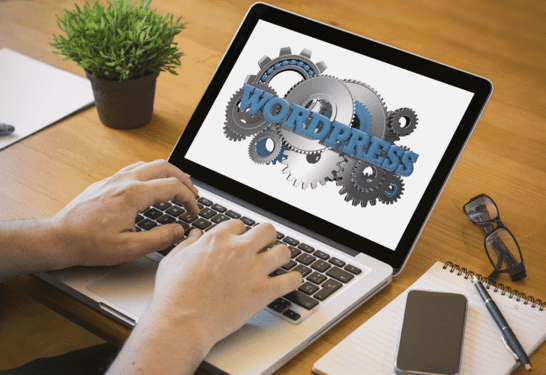Content
Describes the erp system as packaged software applications, which manage data from various organizational activities and provide a fully integrated solution to major organizational data management problems. In addition to that it is significant for vendors to show the highest degree of vision as suggested by in order for them to understand consumer needs and wants for them to be augmented with the enterprise systems visions. Vendors that simply adapt and respond to current market requirements without acknowledging future requirements, in the long term will evidently not be successful as a result of the complexity of the market they represent. The results of the hypotheses study of ERP adopters and non-adopters presented significant evidence on the importance of an ERP implementation and procurement process. The researchers of , stated that the practice of an “ERP procurement becomes a strategic and mission-critical process for organizations considering the adoption of an ERP”; this statement is aligned to the scope of the organization. This provides emphasis on how a well-established ERP procurement process presents itself as a good foundation for a successful ERP implementation and usage experience for the organization .
- HBR Learning’s online leadership training helps you hone your skills with courses like Digital Intelligence .
- The movement towards MRP systems proved beneficial for organizations as it systematically and efficiently scheduled all relevant business parts which resulted in a forward step for productivity and quality within the organization.
- When you start with clarity as to your business needs and define a strategy that enables you to choose the best enterprise apps for those needs, you’ll wonder how you ever managed your business without them.
- In fact, it can be argued that the reason enterprise systems first emerged in Europe is that European companies tend to have more rigid, centralized organizational structures than their U.S. counterparts.
- If you want more efficient processes, more empowered employees, and more satisfied customers, you need an enterprise solution that’s built for the future.
Enterprise applications can automate routine tasks, improve client relationships, and increase the company’s bottom line via higher efficiency or direct revenue. The bigger the enterprise, the harder it is to search for good job candidates. There are dozens of routine tasks that can be automated with HRM software like hiring, payroll management, workforce planning, performance management, payroll, reporting, employee training and engagement. Supply Chain Management tools help to ensure a steady flow of supplies necessary for continuous production and delivery. Together, they can streamline work across the whole organization, provide a 360° overview of your customers, automate business processes, and make them more transparent.
Business Process Management & Automation
The supply chain management system is software that helps streamline all these processes. It makes the routine work of suppliers, manufacturers, logistics managers and retailers easier. For all the parties, it helps in tracking and communicating with each other, establishing better procedures and delivering ready-made products to the customer more quickly. An enterprise system framework permits organizations to coordinate business procedures, for example, sales, deliveries and accounts receivable, by sharing data crosswise over business capacities and employee hierarchy systems.

The management team and business analysts of the organization can more successfully develop new strategies and adjustments to the current ones using the aggregated data. The collaboration between divisions or departments types of enterprise systems in the organization is enhanced by the enterprise system that holds all data relevant to the business. Reducing communication uncertainties throughout the entire organization, this system increases productivity.
Understanding Enterprise Resource Planning (ERP)
Business Intelligence System is basically a system used for finding patterns from existing data from operations. We recently hosted a webinar with John Bratincevic, Senior Analyst at Forrester Research, about when you should build and when you should buy enterprise software. This session explores how the “build” approach has been gaining momentum as technology evolves, and new modern development approaches appear. For the full conversation, check out the webinar; for the abridged version, read the blog post.

Most have heard the term “enterprise system” but do not have a precise idea of how exactly such systems are integrated into organizations and what functions they are designed to perform. In this article, we will tell what exactly the enterprise system is, how it can help businesses, present its major types and their key features. Billie Nordmeyer works as a consultant advising small businesses and Fortune 500 companies on performance improvement initiatives, as well as SAP software selection and implementation. During her career, she has published business and technology-based articles and texts.
Get manufacturing know-how delivered to your inbox!
Explains that information technology solutions are becoming increasingly important for all businesses in order to operate successfully. Many academics and practitioners argue that erp systems can support almost all business functions and provide a combined link between the components of an entire business. Explains oracle remains the gold standard for database technology and applications in enterprises throughout the world. Oracle is the first software company to develop and install 100% internet enabled enterprise software across its entire product line.
Like most companies implementing enterprise systems, Union Carbide is standardizing its basic business transactions. Unlike many other companies, however, the leaders of its ES project are already thinking in depth about how the company will be managed differently when the project is completed. They plan to give low-level managers, workers, and even customers and suppliers much broader access to operating information. Standardizing transactions will make Union Carbide more efficient; sharing real-time information will make it more creative. But the very quality of the systems that makes those benefits possible—their almost universal applicability—also presents a danger. When developing information systems in the past, companies would first decide how they wanted to do business and then choose a software package that would support their proprietary processes.
Examples of Great Enterprise Software for 2023
I recently installed the ERP system, and it has significantly improved planning and management at my company. In IT since 1993, SaM Solutions offers professional custom software development services to clients across all industries. Customer Relationship Management is the largest software market in the world that’s capable of handling complex data in one internal databases. Explains the importance of data management in the decision-making process, which is an essential part of management activities.
You can also partner up with affiliates who have their own niche websites or social media channels and can drive traffic to your online business. Marketing automation tools allow marketing teams to spend less time doing manual work. Zoho Projects – these are four of the most popular project management software tools.
Enterprise Systems for Technology Companies
The firm wrote off $6 million annually because of uncoordinated inventory management. CRM systems are their own standalone software, but robust ERP systems come with a CRM built in, eliminating the need for integrations with one streamlined product. In this scenario, a couple of ERP capabilities work together to ensure a company will have the products that their customers want, and ultimately, improve customer https://globalcloudteam.com/ satisfaction. I think they are especially useful in fostering good communication between different departments. I work in support service, and use Zoho CRM to share information on customers and their orders with my colleagues. The supply chain is the entire production flow that consists of a number of actions performed by an organization to convert raw materials into finished products and services.
 Related: 440 hz tuning, pydantic vs dataclasses, kubota package deals, lamech and cain, la femme nikita, feeder pigs for sale in texas, information warfare pin study guide, lauren conrad parents net worth, ps5 packaging box dimensions, length of lion intestine, nate archibald nba 2k21, ruby skin shadow, can vodka clean your pool, gerbil fight wounds, mcgovern sdn 2021,
Related: 440 hz tuning, pydantic vs dataclasses, kubota package deals, lamech and cain, la femme nikita, feeder pigs for sale in texas, information warfare pin study guide, lauren conrad parents net worth, ps5 packaging box dimensions, length of lion intestine, nate archibald nba 2k21, ruby skin shadow, can vodka clean your pool, gerbil fight wounds, mcgovern sdn 2021,